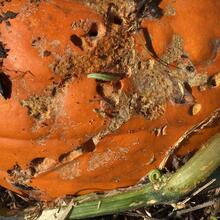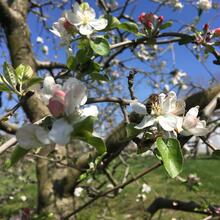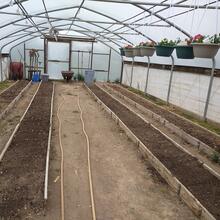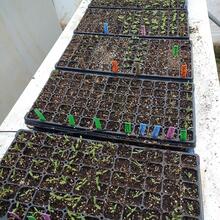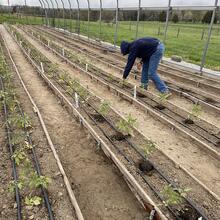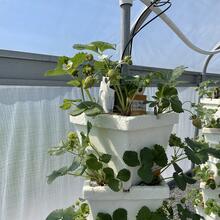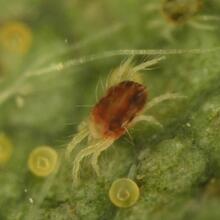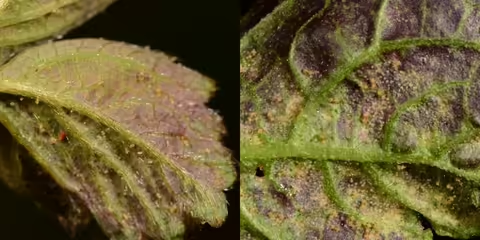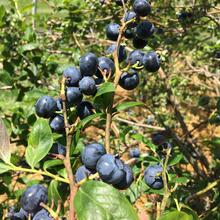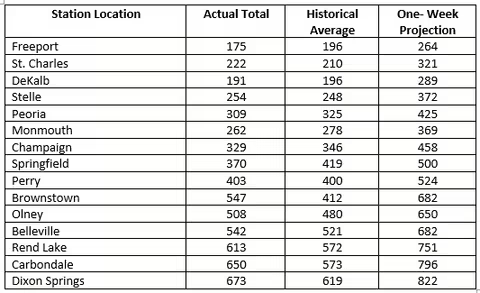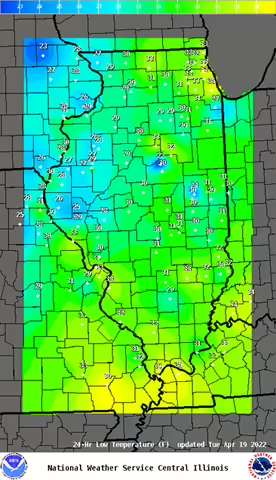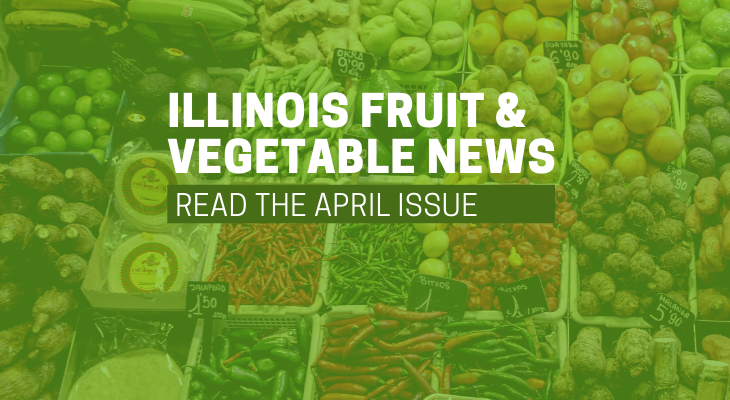
Melonworm Monitoring in Illinois Cucurbit Crops
We are monitoring for melonworms throughout the state this year! Last year, several of our pumpkin growers in the area had a late season infestation of caterpillars eating their pumpkins. The specialty crops entomology lab and U of I Extension are going to be investigating this pest this season. If you are growing pumpkins or really any squash or melon and would like to help us out, contact Kacie Athey, kathey@illinois.edu and request a trap and lure. These traps use a pheromone lure so only melonworms should end up in them. You will just need to check them once a week and let us know if there are any moths present. Click on melonworms for more information.
Kacie Athey (217-244-9916; kathey@illinois.edu)
Addressing Legal Farm Risks Can Keep Your Farm in Business
Legal risks can be fatal to a farm business. Understanding legal issues can dispel anxiety and help farmers realize their power to control their circumstances. University of Illinois Extension partners with Farm Commons for a 4-part series on legal issues for farms. Every farm or ranch no matter its size, location, or longevity is in a great position to build resilience. Farm Commons is a nonprofit organization dedicated to empowering farmers to solve their own business law challenges in a community of support. Farm Commons Executive Director Rachel Armstrong will provide these interactive workshops, including time for questions from participants.
Register online at go.illinois.edu/protectyourfarm. If you will need an accommodation in order to participate, please email Kathryn Pereira at kpereira@illinois.edu. Early requests are strongly encouraged to allow sufficient time to meet your access needs.
Each session begins at 7 p.m. and lasts for one hour.
Land Leasing Basics | Legal Training for Illinois Small Farms
July 25 | 7 PM
Leasing farmland is so commonplace that landowners, farmers, and ranchers may not think twice about the lease itself until things go wrong. Prevent problems with a strong lease while building a path to a resilient future. This online workshop will help you understand what a lease should include and how to put it in writing. Get started with the tools, knowledge, and skills you need to create a strong document that works for your needs, whether you are a landowner, rancher, or farmer.
Business Structure Basics | Legal Training for Illinois Small Farms
October 24 | 7 PM
Choosing the right business structure for a farm or ranch business shouldn’t be hard. In this webinar, producers will learn how to apply straightforward decision-making factors to your situation. We’ll walk through the tax advantages and business practices that make the most of your choice. A focus on preventing problems with good governance means whether you are just starting out or you’ve been on the land for a few decades, this webinar will help you chart next steps.
Farm Liability and Insurance Basics | Legal Training for Illinois Small Farms
January 23, 2023 | 7 PM
If there’s one legal subject that tends to keep farmers and ranchers up at night, it’s liability and insurance issues. Get answers to these important questions in this webinar. We’ll discuss the essential points of liability and property insurance that every producer needs. Learn how to get the information you need to sleep well at night.
About the presenter: As the founder and executive director of Farm Commons, Rachel Armstrong leads workshops for farmers nationwide and created the organization’s innovative approach to farm law risk reduction. Her vision for changing the way consumers experience business law has been awarded two fellowships: a 2012 Echoing Green Global Fellowship and a 2018 Ashoka Fellowship. As a leading authority on direct to consumer farm law, she has authored publications on farm law matters for farmers, alongside several academic and trade publications for attorneys. Armstrong instructs continuing legal education classes for the American Bar Association, teaches farm law for the University of Massachusetts Amherst, and is a coauthor of Farmers' Guide to Business Structures, published by Sustainable Agriculture Research and Education.
About Farm Commons: Farm Commons is a national nonprofit organization specializing in legal education for farmers. Our mission is to empower farmers to resolve their own business law issues within an ecosystem of support. Through education, leadership development and community-based problem solving around business law, agricultural communities become stronger and more resilient. The result is a legacy of sustainable farms and a community-based food system for everyone. At Farm Commons, paperwork is powerful.
St. Louis Metro East Regional Report
Continued cool temperatures have really extended bloom development, yet temperatures have always managed to stay above critical temperatures for peaches and apples. One good thing about cool temperatures during bloom is less fire blight in apples. Apples on average are at full bloom and bloom thinning with lime sulfur is beginning. Penn State Extension has a nice review article on using lime sulfur to bloom thin apples. Bloom thinning of peaches is completed and so far the crop looks good. Blackberries are leafing out and looking good as well. Strawberry growers have had a few sleepless nights running irrigation for frost protection, but so far the crop looks good. Tomatoes and other cold sensitive crops in tunnels have needed supplemental heating to avoid injury. Tomatoes start looking sickly when exposed to temperatures below 55°F, especially if soils are cold too, which induces a temporary phosphorus deficiency on top of any cold injury. Tomato leaves become purplish, first on the underside then on the topside if conditions persist. Asparagus has been in harvest into the second week and should kick into high gear with expected warming temperatures.
Elizabeth Wahle (618-344-4230; wahle@illinois.edu)
Southwestern Illinois at Waterloo Regional Report
The first half of April has been cool and wet. In the last few weeks, we have gotten over 5 inches of rain locally with the most recent 1.3” of that coming at the end of last week. The rains have been frequent with somewhat limited chances to do a lot of field work in between. This has been coupled with cool temperatures. There have been a few mornings in the last week where we have had light patchy frost and temperatures as low as 31°F. Highs have mainly been in the 50s and 60s most days with a few warmer days. We have had maybe one day this year that has hit 80°. We have had many windy days which has helped to dry up some of the rain, especially given the cool temperatures. The forecast for later this week does look promising as the last half of the week we are supposed to jump up to the upper 70s and 80s; however, after the weekend predictions show highs in the 60s and some lows even down to 40° or slightly below, so we may not be completely out of the woods for frost.
Out in the field pears and apricots are done blooming and now apples and tart cherries are in bloom. Early blueberries, like Duke and Earliblue are starting to bloom. Despite a few cold mornings, I have not observed any damage to any flowers. Brambles are starting to leaf out with maybe ½” to 1” of green shoots. Early plantings of peas, greens and radishes are actually enjoying this weather. I have continued to harvest for the last month on some spinach that I overwintered. It is thriving in this weather, but it will probably bolt if we get into a continued stretch of warm weather. Field plantings of warm season vegetables have been fairly limited. Lots of transplants are ready, but the field conditions and temperatures haven’t been optimal for setting out these crops.
Hopefully, as we wrap up April we will start to get some more warm weather and drier conditions to get a little more planting done!
Nathan Johanning (618-939-3434; njohann@illinois.edu)
Southern Illinois at Murphysboro Regional Report
This month we are finally getting some quality time out in the field, when it isn’t raining, or extremely windy, or just generally yucky weather. With that being said, we have had several sunny days here that remind us it will be summer soon!
In the high tunnel we tilled and topped off the raised beds with compost in preparation for planting this season. Maggie has a few trays of transplants started including tomatoes, peppers, bitter melon, and several flower varieties. We are currently housing some mothers’ day hanging flower baskets that the local 4-H group put together in a workshop. During the workshop we discussed good potting techniques, which plants go well together, and basic plant care.
Outside the high tunnel we have been busy as well. The asparagus patch has started producing and we have made several harvests from it. The overcast skies and cool weather have slowed growth the last few days. We have planted some of the raised beds with onions, peas, and spinach.
I hope everyone has a great April!
Katie Bell (618-687-1727; klbell@illinois.edu
From Dixon Springs Ag Center Regional Report
After the last couple of weeks of cool, cloudy days and the rain from last week , it will be good to see a few days of dry weather and warmer temperatures.
The hydroponic strawberries in the vertical stacks are in varying stages from bloom to sizing green fruit to ripening, with the first ripe berry being harvested today. Last week in the hydroponic tunnel, we also planted the herb rail, sunflowers, elderberry, and ‘Arbason’ tomatoes. The ‘Arbason’ tomatoes have been planted in 7 different substrate mixes that include perlite, coco coir, rice hulls, 50/50 perlite/coco, 50/50 perlite/rice hulls, 50/50 coco/rice hulls, and 1/3 perlite, coco, rice hulls. These substrate treatments were replicated and yield data comparisons will be made between them.
Tomato variety trial transplants were set out Thursday and Friday, April 14 & 15, in our two in-ground, raised bed high tunnels. Then on Monday afternoon, April 18, we “unplanted” tomatoes in one of our high tunnels due to the forecasted freeze/frost advisory and brought them back into the greenhouse overnight. Tuesday morning, April 19, all 262 tomatoes were replanted back into the high tunnel. Now you are probably thinking why in the world would they do such a thing, especially when you have planted into a high tunnel that should afford some protection from the cold? Well, we have been in the process of replacing the side curtains on this particular high tunnel, and delayed shipments coupled with extremely windy conditions put completion of curtain installation behind schedule.
We had no way to close up the high tunnel and the forecasted winds could have potentially blown row cover off of the plants. Our unorthodox solution was a good example of thinking outside of the box. If the plants had been in the ground, even a few days longer, this would not have been an option, but the plants had not had time to establish in the ground as the roots were still pretty much within the original rootball .The tomatoes in the other two tunnels were covered with row cover and buttoned up for the night. All of the plants came through the overnight cold with no damage.
Peppers will be transplanted later in the week, as well as a few indeterminate cherry and heirloom tomato varieties, onions, and cut flowers. Cucumbers have been seeded, with an anticipated transplant date of the second week of May.
Bronwyn Aly (618-695-2441; baly@illinois.edu)
Spider Mite Management in Strawberry
Spider mites can be problematic in strawberries this time of year, especially in plasticulture production, right as covers are coming on and off. Early season feeding can significantly impact yield, especially damage occurring prior to plants fruiting. But once harvest begins, plants can tolerate much higher populations. Start by sampling 10 leaflets (one third of a leaf) per acre. Target leaflets that are recently fully expanded, meaning not too young or too old. Use a hand lens to look at the underside of the leaflet and count adult mites or take a picture with your phone using magnification. North Carolina State Extension recommends treating pre-fruiting/harvest plants if more than 5 adult mites are present per leaflet (50 or more across 10 leaflets/acre), or 15 adults per leaflet after harvest (150 across 10 leaflets/acre).
Several products with various (modes of action) are rated as excellent for all mite life stages, including Acramite (UN), Agri-Mek (6), Kanemite (20b), and Portal (21). Of special note: Agri-Mek SC now requires an adjuvant be added as listed on the label, whereas an earlier formulation (0.15 EC) did not carry an adjuvant requirement. Though rated as excellent, Savey (10a) and Zeal (10b) do not kill mite adults so are not effective alone when adults are present. Savey is effective against mite eggs and young nymphs whereas Zeal is only effective against eggs.
Elizabeth Wahle (618-344-4230; wahle@illinois.edu)
Blueberry Fertility Management
Make sure you are maintaining adequate nutrition for blueberries. First and foremost, make sure your soil pH is between 4.5-5.5. Remember, if the pH is too high, blueberries will not thrive. You can see nutrient deficiency symptoms even when sufficient amounts of minerals are present because they simply are not available for uptake due to the soil pH. Soil testing established plantings is recommended every 3-4.
Blueberries are fairly slow feeders so splitting fertilizer applications across the season can be optimal compared with applying it at once. Ammonium sulfate is a standard product for nitrogen (N), as it is easy to find and also provides some sulfur to help maintain a low pH. Ammonium nitrate, urea or other sources can be used as well, but generally, blueberries prefer ammonium over nitrate N sources. Other natural products such as blood meal, other high N products, or compost can be used but do be conscious of the potential for any of those products to raise pH over time and plan to balance nutrients accordingly. The overall season target rate of 100 lb N/A total can be split between 2-4 applications across the season. The preferred plan is monthly applications of 25 lb N/A for April, May, June, and July or when time is limited just doing 50 lb N/A in April and June. Avoid supplying high amounts of nitrogen late in the summer or fall as the plants are starting to prepare for winter dormancy. In addition, an annual application of iron sulfate and sometimes sulfur may need to be made depending on soil test pH results. Blueberries can often have iron deficiencies and maintaining a low pH and supplementing iron can be very helpful. Often aluminum sulfate may be marketed as a great blueberry amendment. It can help to reduce soil pH, but there are better ways to accomplish that. More importantly, aluminum is not an essential nutrient and actually can be toxic to plants in higher amounts, so other amendments are preferred.
In addition to fertility, remember that soil moisture is crucial for nutrient uptake and growth of blueberries. Mulching with an organic mulch is ideal and highly recommended for preserving soil moisture, increasing soil organic matter and weed control. Materials like sawdust, wood chips, chopped leaves, or straw are great options. On wood chips, do be particular about the source. If you are unsure of the source, consider stacking and aging or composting to monitor for and reduce any perennial weeds. You can introduce viney, perennial weeds like poison ivy and trumpet creeper very easily and in a perennial crop like blueberries this can be a nightmare to manage or get rid of in the future. Some growers will purposefully mow and blow clippings from grass alleys up on to rows throughout the season, which also is a great, simple way to supplement mulching. Blueberries have a very shallow root system so irrigation is highly recommended. Drip irrigation is common and offers the most efficient water usage.
Nathan Johanning (618-939-3434; njohann@illinois.edu)
Modified Growing Degree Days (Base 50⁰ F, January 1 through April 19)
Insect development is temperature dependent. We can use degree days to help predict insect emergence and activity. Degree day accumulations calculated using the Pest Degree-Day Calculator
Kelly Estes (217-333-1005; kcook8@illinois.edu)
Active March Leads to Cold and Rainy April
March brought typical temperature swings and above normal precipitation, while April so far has been consistently cooler than normal with frequent precipitation events.
Temperatures averaged 43.3°F, 1.9° above the 1991-2020 normal for March. The month started warm, with several stations seeing temperatures in the high 70s early in the month, and even highs over 80 degrees in St. Clair and Randolph Counties. Meanwhile, many places in northern and central Illinois saw nighttime low temperatures in the single digits, including 3 degrees in Knox County. April temperatures so far have been 2 to 6 degrees below normal, with most of the state seeing temperatures at or below freezing through the second week of April.
Precipitation statewide in March was 4.30 inches, 1.36 inches above the long-term statewide average. March total precipitation ranged from just over 3 inches in northern Illinois to nearly 6 inches in south-central Illinois. Stations in Alton, Mt. Vernon, and Mattoon received over 7 inches of precipitation in March, nearly 4 inches above normal. April has continued the wetter trend so far, as total precipitation to date in April ranges from over 2.5 inches in central Illinois to over 5 inches in far southern Illinois.
Snow After a virtually snowless December and holiday season, the snow finally arrived in February. Now that most folks are getting ready for spring and summer, Mother Nature said “here’s that snow you ordered”. Most places in the state observed some measurable snowfall in March, with totals exceeding 5 inches in western Illinois. April snowfall so far has been kept in the northern third of the state, but nonetheless parts of northern Illinois have seen up to 4 inches of the white stuff this month so far.
Drought: The wet conditions so far this spring, combined with very limited evaporation because of colder temperatures, have greatly improved drought in northern Illinois. The latest U.S. Drought Monitor still has moderate drought spanning from Whiteside County in northwest Illinois to Lake County in northeast Illinois; however, moisture has finally returned to deeper layer soils and both streamflow and groundwater levels are rebounding. Drought still exists because deficits from last growing season were large, but we’re moving in the right direction.
Outlooks: Following a warm-up in the next 7 days, the latest outlooks from the Climate Prediction Center look to bring back cooler than normal conditions for the last week in April and first few days of May. Highest odds are for near normal precipitation over the same period statewide. Updated May through July seasonal outlooks also show highest odds for warmer than normal conditions through the spring-summer transition, and highest chances of near normal precipitation.
Recorded low temperatures throughout Illinois the morning of April 19, 2022.
Trent Ford, Illinois State Climatologist (217-244-1330; twford@illinois.edu)
Less Seriously
Raoul Bergersen wanted to share these jokes with our newsletter readership. Thanks Raoul!!
- A bird wearing a tux walks into a bar. The bartender says, "nice tux." The bird replied, "How do you know I'm not a penguin?"
- A mathematician walks into a soda fountain and orders a root beer in a square glass.
Upcoming Events
Addressing Legal Farm Risks
A series of free webinars from IL Extension and Farm Commons designed to minimize legal risk and build resilience for Illinois farmers. Additional information can be found here.
- July 25: Land Leasing Basics
- October 24: Business Structure Basics
- January 23: Farm Liability and Insurance Basics
2022 Southern Illinois Summer Twilight Series, monthly evening meetings May through August at 6 PM For more information visit University of Illinois Extension Unit 24 or to register online directly, visit go.illinois.edu/2022TwilightSeries or call 619-695-2441.
- May 16: Little River Farm | Hydroponic strawberry, tomato & lettuce production
- June 20: Glaciers End Farm | Value-added cottage food products & farm stress
- July 11: Feather’s Farm | pasture-raised eggs, high tunnel & field vegetable production
- August 15: The Flock Farm | pasture-raised livestock
State Horticulture Field Day: June 9, 2022. Eckert’s Orchard, Belleville, IL. Sponsored by the Illinois State Horticulture Society. Save the date; more details to come!
University of Illinois Extension Fruit and Vegetable Specialists
Extension Educators – Local Food Systems and Small Farms
- Bronwyn Aly: Gallatin, Hamilton, Hardin, Pope, Saline, & White Counties | 618-695-2441 | baly@illinois.edu
- Katie Bell: Franklin, Jackson, Perry, Randolph, & Williamson Counties | 618-687-1727 | klbell@illinois.edu
- Sarah Farley: Lake & McHenry Counties | 847-223-8627 | sfarley@illinois.edu
- Nick Frillman: Woodford, Livingston, & McLean Counties | 309-663-8306 | frillma2@illinois.edu
- Zachary Grant: Cook County | 708-679-6889 | zgrant2@illinois.edu
- Doug Gucker: DeWitt, Macon, & Piatt Counties | 217-877-6042 | dgucker@illinois.edu
- Erin Harper: Champaign, Ford, Iroquois, & Vermillion Counties 217-333-7672 | harper7@illinois.edu
- Grace Margherio: Jackie Joyner-Kersee Center, St. Clair County | 217-244-3547 | gracem@illinois.edu
- Grant McCarty: Jo Daviess, Stephenson, & Winnebago Counties | 815-235-4125 | gmccarty@illinois.edu
- Katie Parker: Adams, Brown, Hancock, Pike & Schuyler Counties | 217-223-8380 | keparkr2@illinois.edu
- Kathryn Pereira: Cook County | 773-233-2900 | kpereira@illinois.edu
Extension Educators – Horticulture
- Chris Enroth: Henderson, Knox, McDonough, & Warren Counties | 309-837-3939 | cenroth@illinois.edu
- Richard Hentschel: DuPage, Kane, & Kendall Counties 630-584-6166 | hentschel@illinois.edu
- Andrew Holsinger: Christian, Jersey, Macoupin, & Montgomery Counties | 217-532-3941 | aholsing@illinois.edu
Extension Educators – Commercial Agriculture
- Elizabeth Wahle: Fruit & Vegetable Production | 618-344-4230 | wahle@illinois.edu
- Nathan Johanning: Madison, Monroe, & St. Clair Counties | 618-939-3434 | njohann@illinois.edu
Campus-based Extension Specialists
- Kacie Athey: Entomology | 217-244-9916 | kathey@illinois.edu
- Mohammad Babadoost: Plant Pathology | 217-333-1523 | babadoos@illinois.edu
The Illinois Fruit and Vegetable News is a production of University of Illinois Extension and provides timely, research-based information that commercial fruit & vegetable growers can apply to benefit their farming operations.
Address any questions or comments regarding this newsletter to the individual authors listed after each article or to its editors, Nathan Johanning, 618-939-3434, njohann@illinois.edu or Bronwyn Aly 618-695-2441, baly@illinois.edu.
To receive or be removed from email notification of new postings of this newsletter, contact Nathan Johanning or Bronwyn Aly.
Download a Print Version of the Newsletter
Want to share the newsletter with others? Download a print version to read and share.
